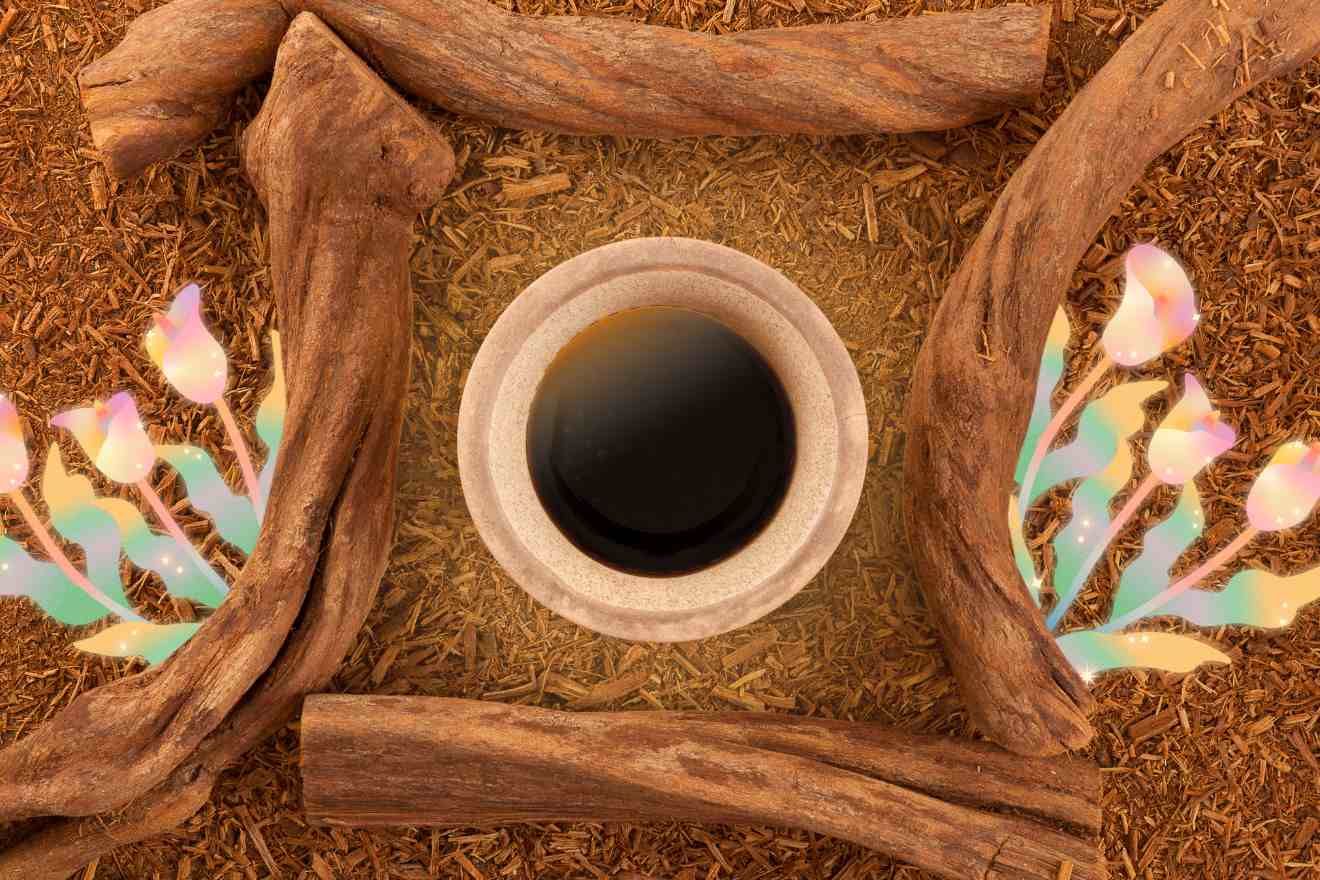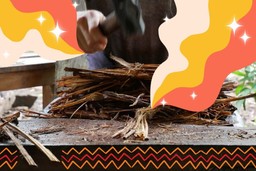Ayahuasca is a psychoactive brew that has been used for centuries by indigenous peoples in the Amazon rainforest for spiritual, shamanic, and healing purposes. The word “ayahuasca” is derived from the Quechua language. It roughly translates to “vine of the soul” or “vine with a soul.” The ayahuasca vine or the Banisteriopsis caapi vine is the source of the monoamine oxidase inhibitor (MAOI). It allows the DMT, the psychoactive molecule NN-dimethyltryptamine, to be orally metabolized. Plants such as Psychotria Viridis or Diplopterys Cabrerana contain the hallucinogenic compound DMT. These are brewed together with the caapi vine to create the ayahuasca tea.
Ayahuasca Ceremonies and Experiences
The combination of these plants in a specific brewing process results in a potent psychoactive beverage. Ayahuasca ceremonies are traditionally conducted by experienced medicine people, often from within the ceremonial container. Ideally, they are carried out through the traditions of the indigenous people from where these medicines originate.
Ayahuasca has been growing in popularity globally, especially over the past decade. Consequently, more are becoming aware of both its therapeutic benefits and its reputation for expanding consciousness and improving the human condition. Concurrently, more people are exploring these realms of plant consciousness. However, it is crucial for individuals to approach ayahuasca with respect, caution, and awareness of the potential risks and cultural sensitivities involved.
Ayahuasca experiences may include rich visual and auditory hallucinations. Ceremony participants often report vivid and intense sensory perceptions. Many individuals describe profound spiritual or mystical experiences, a deep connection with nature and the cosmos, and encounters with otherworldly entities.
Many are called to ayahuasca with hopes of facilitating emotional healing and self-discovery. As is often the case with ayahuasca, the purging process is core to deep healing, both physically and emotionally. Besides vomiting and retching, purging takes many forms, including sweating, laughing, crying, yawning, shaking, and shivering, to name a few. Similarly to other psychedelics, your job in ceremony is to surrender to the medicine. Particularly, it’s to let Mother Ayahuasca show you what you need to see and teach you what you need to learn.
Traditions and Variations
Across the Amazon Basin and throughout South America, variations of ayahuasca and Yagé have been practiced for centuries. The following are very brief summaries of various traditions associated with ayahuasca and yagé.
Mestizo Tradition
Shamans of the Mestizo culture, who are of mixed indigenous and non-indigenous ancestry, have developed their own variations of ayahuasca practices. For instance, Mestizo shamans may incorporate elements from various indigenous traditions and adapt the rituals to suit their own cultural context.
Shipibo-Conibo Tradition
The Shipibo-Conibo people of the Peruvian Amazon have a rich tradition of working with ayahuasca. They are known for their intricate geometric art, often inspired by their ayahuasca visions. Shipibo shamanic practices with ayahuasca involve singing icaros (sacred songs) during ceremonies to guide the participants’ experiences while moving the energy and the medicine throughout the maloca or ceremony space.
Shuar Tradition
The Shuar people, who inhabit the Amazon regions of Ecuador and Peru, also have a history of using ayahuasca. They may use a different vine species known as Ayahuasca de la Muerte (Ayahuasca of Death) along with other plants. The Shuar traditionally use ayahuasca for healing, divination, and communicating with spirits.
Siona Tradition
The Siona people reside in the Putumayo region of Colombia. They, too, have a tradition of using yagé. Like other indigenous groups, Siona ceremonies with ayahuasca involve specific rituals, songs, and the guidance of a medicine man or woman.
Tukano Tradition
In the northwest Amazon basin live the Tukano people, with their own ayahuasca version known as yagé. They often combine the Banisteriopsis caapi vine with other plants. Additionally, the medicine person’s role is crucial in guiding the participants through the experience.
Vegetalismo Tradition
Vegetalismo is a syncretic tradition that has emerged, combining elements of indigenous practices with influences from Western esotericism. This tradition often incorporates a more syncretic approach to spirituality and healing, allowing for a wide range of influences. The Vegetalismo variation of ayahuasca use creates a diverse and evolving spiritual tradition within the context of ayahuasca ceremonies.
While there are common themes in these traditions, there can be significant variations in practices, rituals, and beliefs among different indigenous groups. Additionally, ayahuasca’s globalization has led to the emergence of new, often non-traditional, approaches in urban centers around the world. These experiences may draw from indigenous traditions but also incorporate modern interpretations and practices.
As interest in ayahuasca continues to grow, it is crucial to approach the medicine with respect and awareness of its cultural and spiritual significance. The term reciprocity is thankfully often part of the conversation. Many Westerners consciously attempt to avoid the colonial mistakes and horrors of the past by being mindful and respectful of our indigenous Brothers, Sisters, and Two-Spirits who hold the wisdom and legacy of these powerful and beautiful gifts to humanity.







